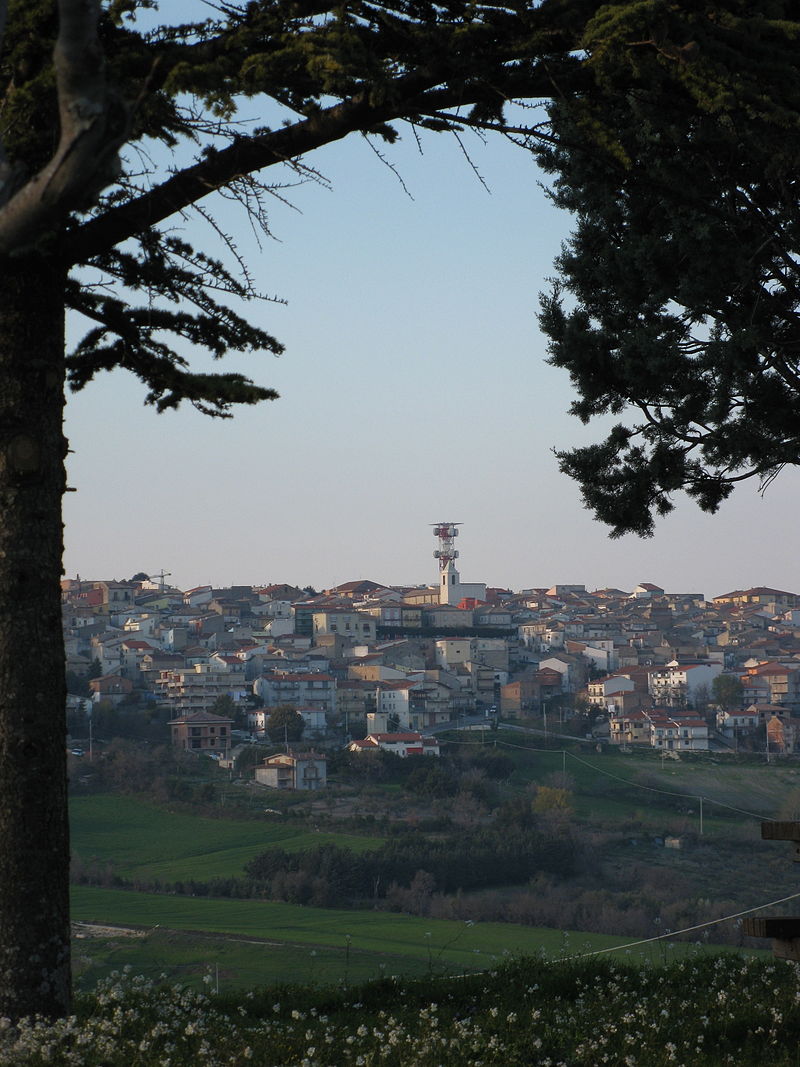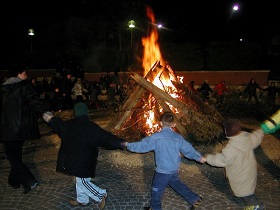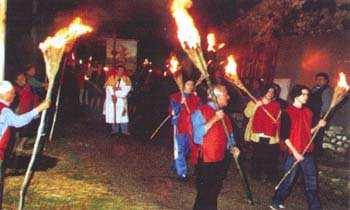Santa Croce di Magliano

Santa Croce di Magliano is a hilltop village in the Italian Province of Campobasso, located about 50 miles northeast of Naples. The village lies about 2000 feet above sea level. Today, the current population is 4,500. Santa Croce is Italian for "Holy Cross."
To see a map showing the location of Santa Croce, click here.
Originally, the village was called Santa Croce of the Greeks. The name was given by Albanian settlers who observed Greek rituals such as Marauasce. The people of Santa Croce have inherited this ritual which is still being observed today. The word "marauasce", means fire. Many small or large fires are lit every year on March 19, in honor of Saint Antonio. Another ritual is the "sciusciafuoche", a hollow iron pipe used to start the fire. Many surnames in Santa Croce originated from the Albanian settlers. The oldest document showing the existence of Santa Croce was dated to 1240 AD. However, it is strongly believed that the village is much older.


The origin of Santa Croce di Magliano dates back to 1450 AD when it was founded by the survivors of three ancient villages which were destroyed by an earthquake; the ancient villages being Magliano, Maglianello, and Civitella. The new village was built on a level square surface with boundary walls on the perimeter, at the corners of which rose four towers, each having two security doors which were closed and guarded by the inhabitants at night. They were forced to do this in order to defend themselves from pillagers or thieves who would invade unsuspecting towns, thus protecting themselves from the danger of being sacked, or worse.
During the feudal period in Medieval Europe, feudal lords abused their power by exercising their "right" of Ius Primae Noctis, in order to impose themselves on young married girls of the peasant class, subjecting them to rape and other indignities on their wedding nights. Santa Croce has a legend about this. In 1810, a young courageous man of the village was ordered on his wedding night by the local squire to send his young bride to him first. Instead, he disguised himself as the young married girl and went to the squires place, beat him to death with his fists, without an ounce of pity for this "enemy of the peasants." From that point on, according to the legend, the practice of Ius Primae Noctis was stopped, at least in Santa Croce.

The only surviving part of the ancient walls of the town is the "Torre di Magliano" (the tower of Magliano). Another ancient legend says that this tower is connected to the town center through a tunnel, which ends in the area called "Quartetto". According to this legend the tunnel was an escape way used in case of emergency when attacked by adversaries or other enemies. Another legend often told is that of children asking their parents for money and being told: "Go to the Torre di Magliano if you want money", this precisely being the only tower to have survived the earthquake.
After the tumultuous period ending in 1860 with the Unification of Italy, many areas of Southern Italy were hit with economical and cultural misery. In the decades that followed, many Southern Italians, including those from Santa Croce, left Italy to find a better life in America.